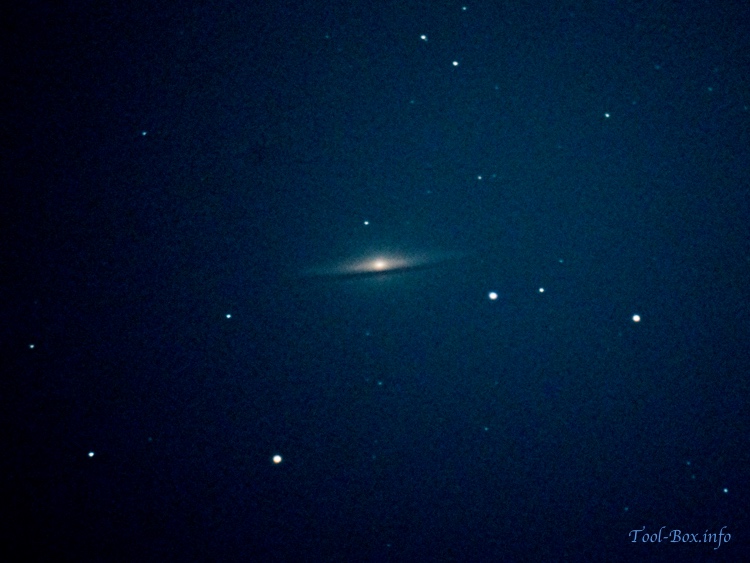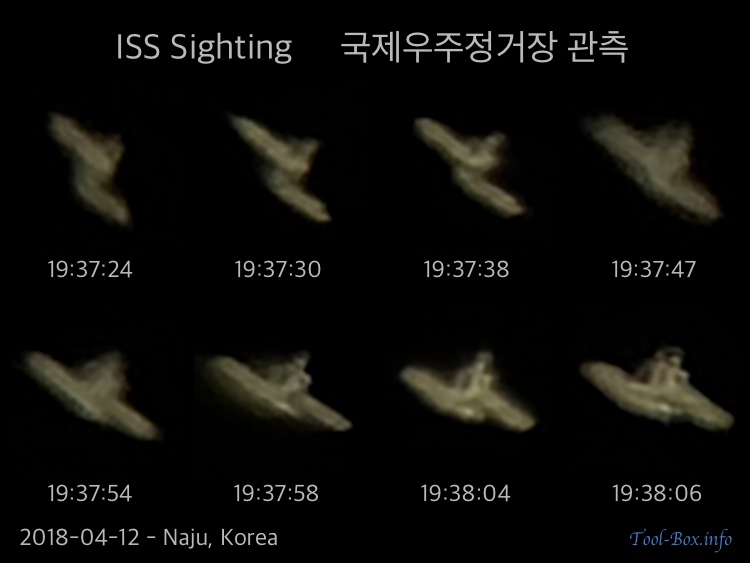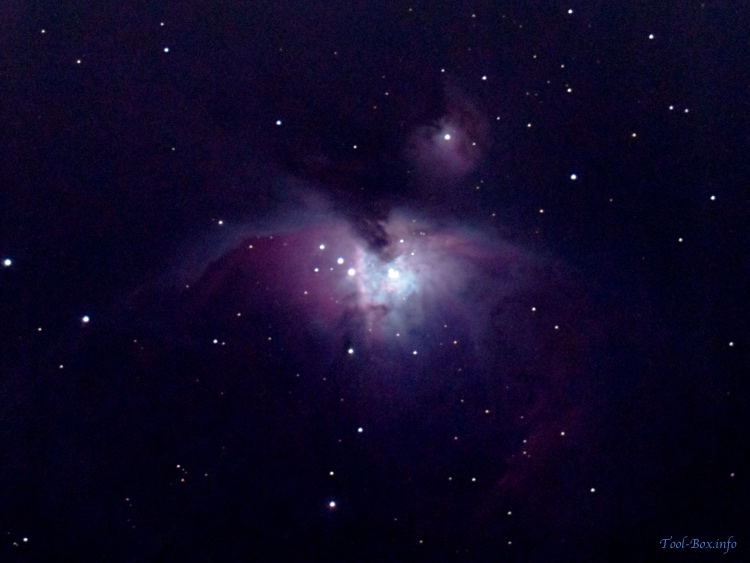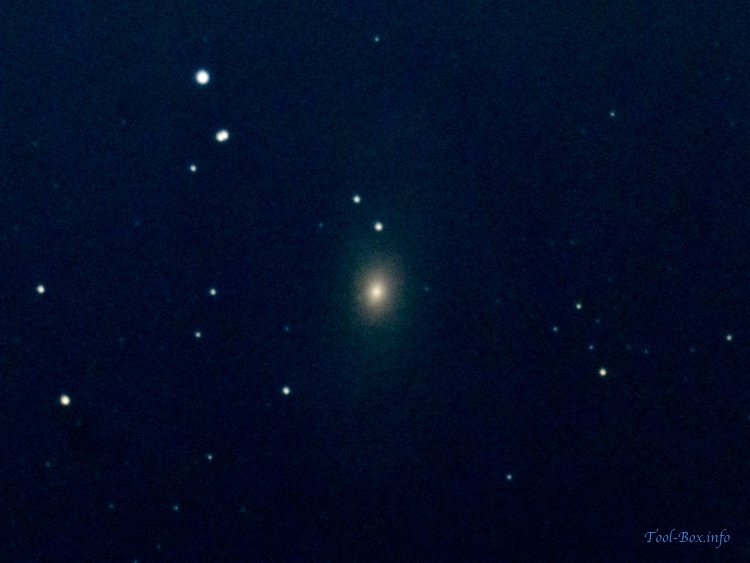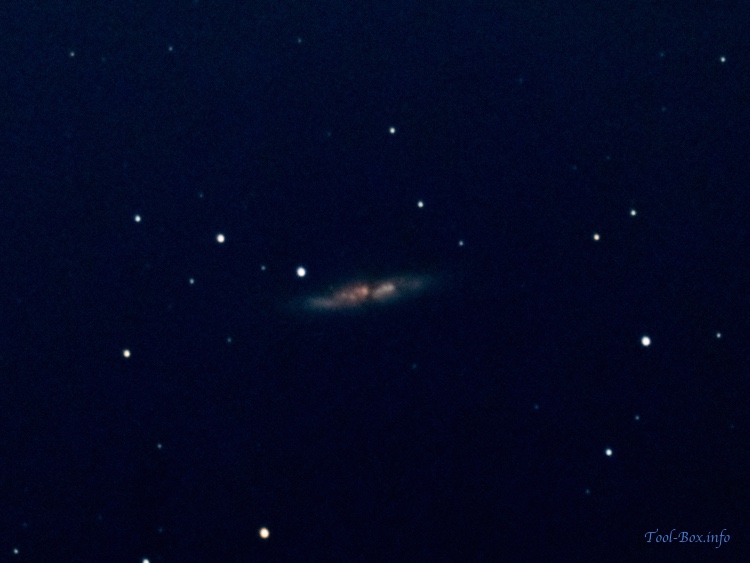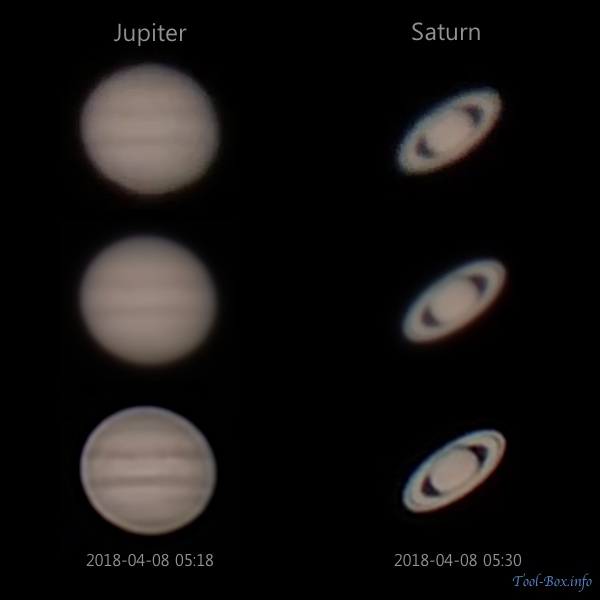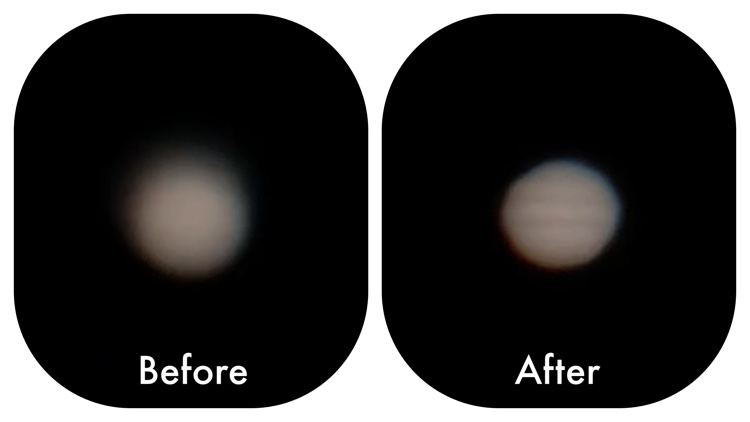100-minute tracking of Jupiter
Posted by Wesley on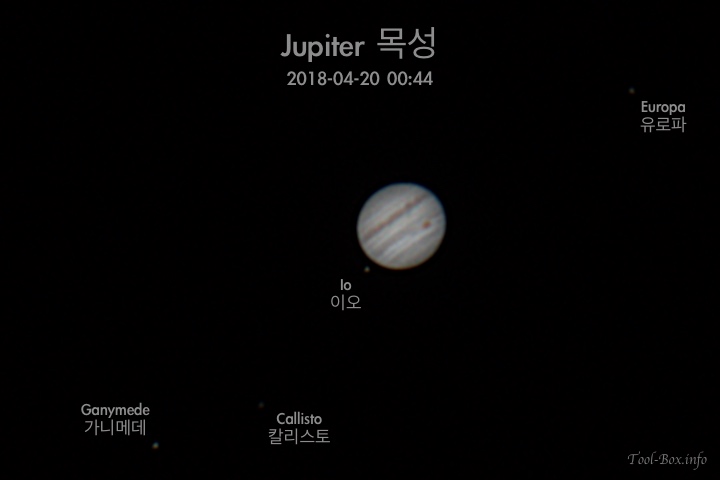
Jupiter and the Galilean moons seen on 00:44, April 20, 2018
Jupiter and its four major satellites (Galilean moons) are good targets for time lapse photography because of the relatively rapid movement. The rotational period of the planet is slightly less than 10 hours, and Io, the innermost of the Galilean moons, orbits the planet in about 42.5 hours. Under good conditions, these things become noticeable over a span of just about an hour.
Shortly after midnight of April 20, 2018, Io came out from behind Jupiter on the left side, while the Great Red Spot was moving towards the back of the planet on the right side after being in the center. These were all captured on my camera as I took 597 photos of the Jovian system over a period of 100 minutes between midnight and 01:40AM. The photos were then stacked and processed in 1-minute intervals (6 photos on average), like the one you see above, then put together into video as you see below.
I think it shows the dynamics of these celestial objects quite well. Now that I have a good grasp of the workflow for making a planetary animation, I should be able to make a similar one for Mars when it approaches Earth close enough to be seen as half the apparent size of Jupiter next July. Before wrapping up, here's a bonus picture of the Jovian system that I took just after photographing the Sombrero Galaxy. You can actually see Io casting a tiny shadow on Jupiter. I thought I would never see that sort of thing on my telescope.
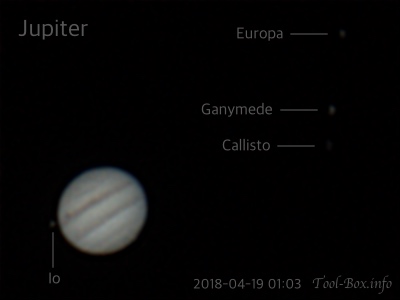
Jupiter and the Galilean moons seen on 01:03, April 19, 2018
Telescope: Celestron NexStar 6SE
Device: Sony A5000 (prime focus)
Settings: (1500mm) - ISO 100 - 1/15s(#1), 1/20s(#2) - (f/10)
Filters: Baader Moon & Skyglow
Time: 2018-04-20 00:00 ~ 01:40(#1), 2018-04-19 01:03(#2) KST
Location: Naju, Korea
597(#1), 6(#2) photos processed with PIPP 2.5.6 and RegiStax 6.1.0.8
